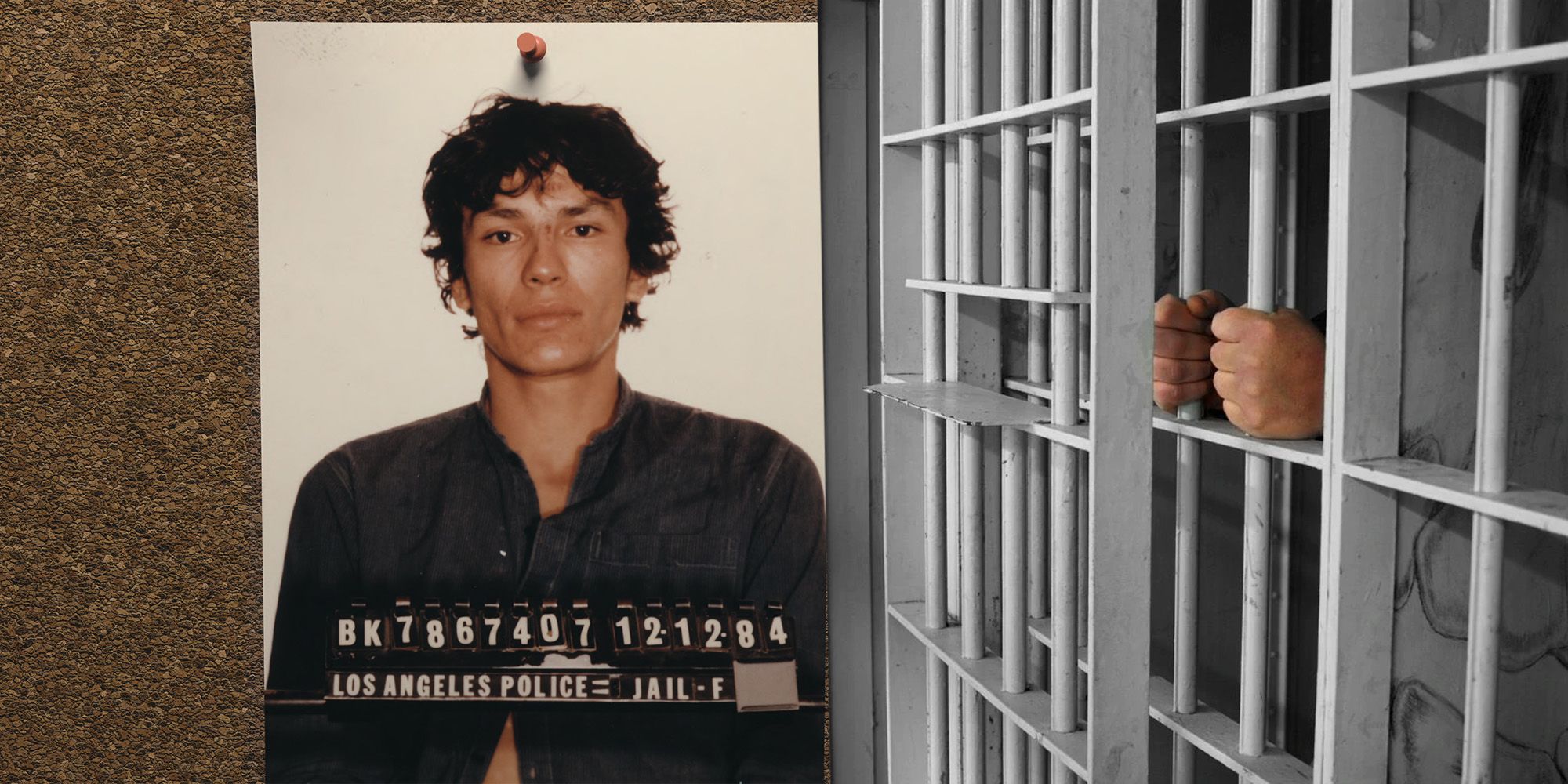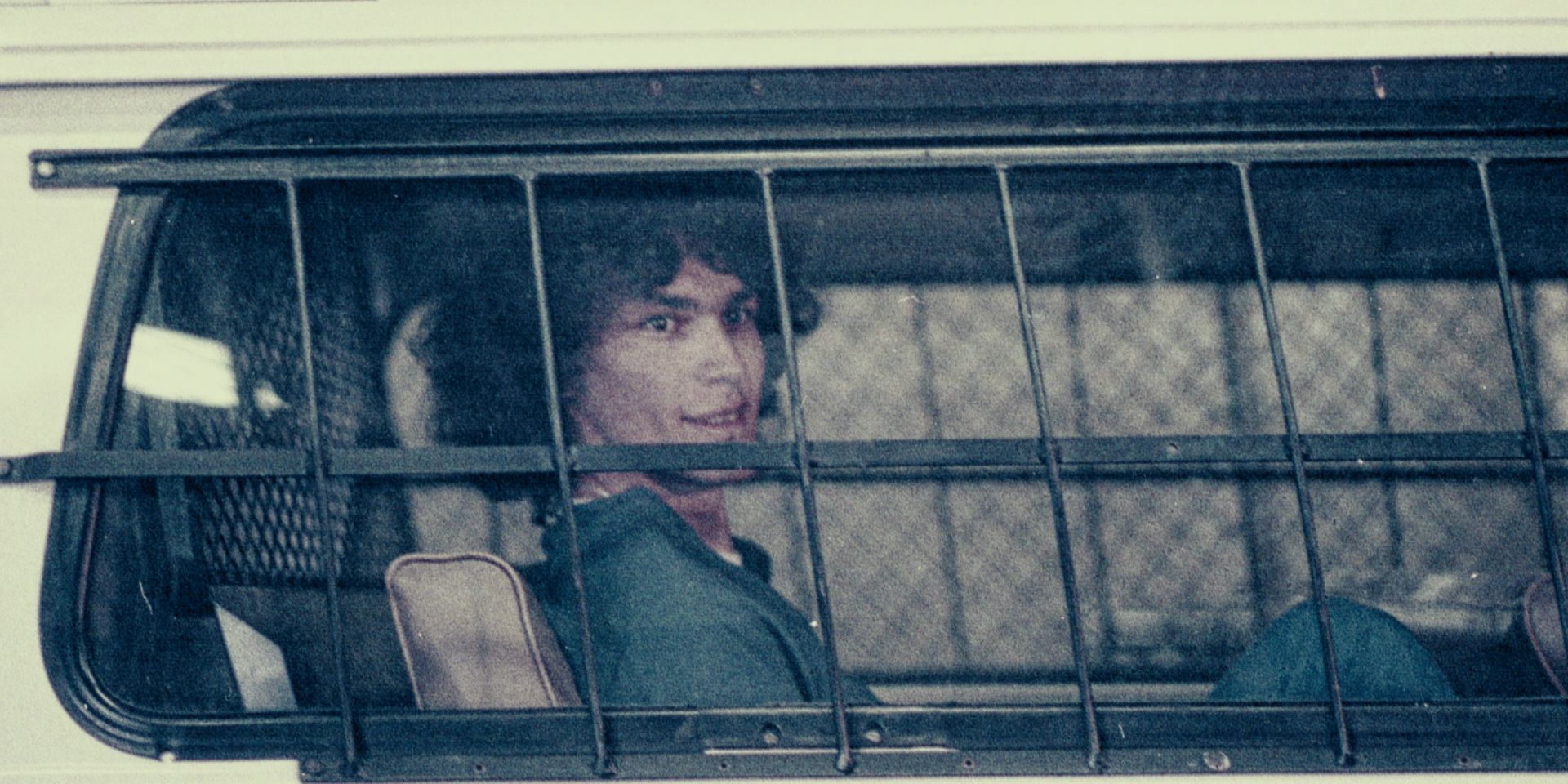Night Stalker: Why Richard Ramirez Was Held In The Hillside Strangler Cell

Night Stalker reveals that serial killer Richard Ramirez was initially held in the Hillside Strangler's former cell, so what's the true significance? The four-part Netflix docuseries explains that investigator Frank Salerno worked both cases, but there's also a psychological aspect that links to Ramirez's cultural persona. Given that Night Stalker inadvertently glamorizes Ramirez, some Netflix viewers may be curious abut the darker subtext, and why the Hillside Strangler connection is relevant.
In Night Stalker, director Tiller Russell establishes the Hillside Strangler context within the first 10 minutes. In the late '70s, an unidentified killer terrorized Los Angeles for several months, and was ultimately revealed to be two separate people - cousins Kenneth Bianchi and Angelo Buono Jr. The aforementioned Salerno served as the primary investigator, and later recruited a young detective named Gil Carrillo to help solve a series of murders during the spring of 1985. When the investigators finally identified and captured Ramirez, the so-called "Night Stalker" was placed in Bianchi's former cell. According to Carrillo, the serial killer was "jazzed" and "excited" about his new home, which raises questions about the detectives' intent and the suspect's frame of mind.
Night Stalker acknowledges the practical reasons for placing Ramirez in the Hillside Strangler cell. As Salerno notes, they were "playing a card" and giving the suspect a sense of "status," if only because they had evidence to suggest that he was interested in serial killers. So, from an investigative standpoint, the decision made sense because Ramirez might have felt inclined to admit to certain murders, which would make the court proceedings much easier for the police. Night Stalker makes it clear that Ramirez wanted attention for his crimes, but the Netflix docuseries unfortunately doesn't cover the appropriate groundwork when deconstructing Ramirez's motivations, and why the Hillside Strangler connection partially inspired the Night Stalker's outlandish behavior in court.

History now shows that Ramirez embraced his serial killer persona. In August 1985, however, Salerno and Carrillo could not have known how their suspect would shamelessly take advantage of his "Night Stalker" persona in court. According to Glen Creason - a librarian at the L.A. Public Library - Ramirez had previously checked out books about "horoscope" and "torture," and Salerno even describes him as a "student" of serial killers who actively pursued information about Ted Bundy and the Hillside Strangler. So, by having a direct connection to the man who actually caught the Hillside Strangler, Ramirez subconsciously received a green light to move forward with the "Night Stalker" persona that the media had created.
Night Stalker does indeed chronicle the circus-like atmosphere of Ramirez's trial, but the director heavily relies on serial killer tropes to portray the subject as a purely "evil" character. There's little exploration about how traumatic childhood experiences may have affected Ramirez, or how he capitalized upon cultural paranoia and pop culture trends by displaying a pentagram on his hand in court. Instead, the synth-heavy Netflix show emphasizes the Night Stalker persona, evidenced by numerous glamour shots of Ramirez wearing sunglasses in court, and also by showing photos of nude women that the subject received while incarcerated.
When Ramirez left L.A. for San Francisco, his first target was actually a man named Peter Pan (the same name as a beloved Disney character), which doesn't seem to be a coincidence when considering that the Night Stalker had been keeping up with media reports, and undoubtedly wanted to manipulate the narrative to his advantage. Yes, Ramirez, may have been "crazy" or "insane," but his post-murder spree behavior was undoubtedly calculated. Being placed in the Hillside Strangler's cell allowed the Night Stalker subject to believe that he'd have the same pop culture status as Bundy and other notorious serial killers.
https://ift.tt/3qL47AD
January 22, 2021 at 05:05AM
Labels: ScreenRant - Feed


0 Comments:
Post a Comment
Subscribe to Post Comments [Atom]
<< Home